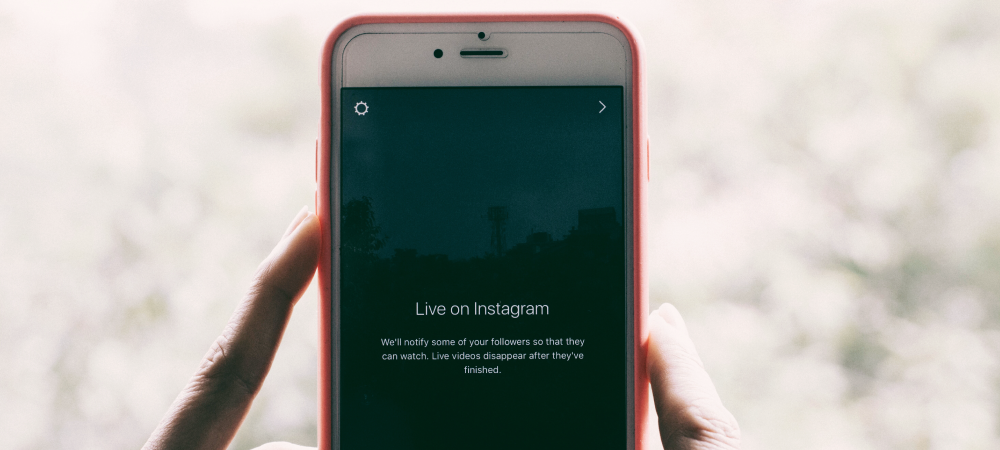If you’ve been under a rock for the last year and a half, you would’ve missed the recent influx of video content all over the web and different video platforms. It’s everywhere, and it’s gotten to the point where Facebook even predicts that its content will be completely video in 5 years.
But along with the invasion of moving images comes the flood of different websites and apps where your video content can live, and competition has created an environment where these companies are constantly copying the services of their rivals (even Medium has a ‘Stories’ feature now that was once a core component of Snapchat).
So, instead of giving a breakdown of whether Facebook is better than Instagram or Snapchat for your video content as all of these are becoming more and more similar every day, I’m going to divide this article by what feature you should be using for your video within the apps themselves.
YouTube vs. Vimeo
We’ll start with the big two because, while other social networks have been branching into video, YouTube and Vimeo are the two largest networks where video is the primary and practically only focus.
YouTube will serve your video to a larger audience than Vimeo, but it can be seen as a less professional outlet for hosting your video content while being compared to Vimeo. YouTube is more attune with the creators who may be using nothing more than the webcam on their laptop to produce their videos.
Vimeo was founded by a group of filmmakers, so their focus remains with the content creators who are developing more professional-style video such as short films. Vimeo also doesn’t show advertisements on your content, so you won’t experience any of those pesky un-skippable ads on their site (although YouTube seems to be diverting away from this).
Notable mention: Being a proud Canadian, I can’t help but include Vidyard in this discussion. Their focus is on B2B video and their platform offers a very business-friendly approach to the analytics and goals related to B2B-oriented videos, such as offering lead generation forms right within the video content itself.
Timeline: Facebook, Twitter, and Instagram
Remember the old saying that anything you put on the Internet will be there forever? Well, this holds true for any content you put on your timeline. That’s not to say that you can’t later delete the video, but someone else may have already made a copy of it on their end; it’s 2017, we all know how the Internet works.
Be that as it may, you will usually put a little more time and effort into videos that live and breathe on your timeline. It’s also more common now to actually post your content directly to these channels as opposed to sharing a link to a YouTube video. Short form video has worked very well in the past given the rapid speed at which people scroll through their news feeds, but Facebook has recently put more of an emphasis on long-form content with the hopes of creating a monetization model by showing ads midway through these videos.
Stories: Instagram, Snapchat, and Others
Stories are videos that you broadcast to your entire audience which exist for 24 hours before going away. They typically have less production value than a timeline video simply because they’re not going to be around forever and they’re usually produced on the fly. But don’t be fooled by their lack of digital permanence, people can still take screenshots!
Live: Facebook, Instagram, and YouTube
Live video has been picking up momentum lately, and it offers creators an authentic way to interact with their audience in real time in a more intimate virtual space. Want to give your fans a behind-the-scenes look at your business? Do a live video. Choose your platform depending on the audience you’re trying to reach: if most of your fans are on Facebook, it makes sense to post content to Facebook.
Disappearing Videos: Snapchat and Instagram
Disappearing videos scream authenticity in the same vein that live video does, but with the added benefit that they’re gone the moment your audience member has finished watching it. However, always remember: screenshots, screenshots, screenshots.
360 Video: Facebook, YouTube and Vimeo
360 video is making headway in the industry, but creators are still figuring out how to use it, especially from a B2B perspective. I might as well copy and paste that sentence about choosing your platform based on your audience because it applies here as well.
I hope that helps you decide what network your video content should live on. It’s also worth mentioning that, if you use more than one network, it’s a good idea to make the experience on each platform unique. Maybe you have a long form video on YouTube and create a shorter, promo-style video for Facebook or Instagram.
So you’ve decided on where to share your video content, now you have to decide what type of video content you’ll create.

